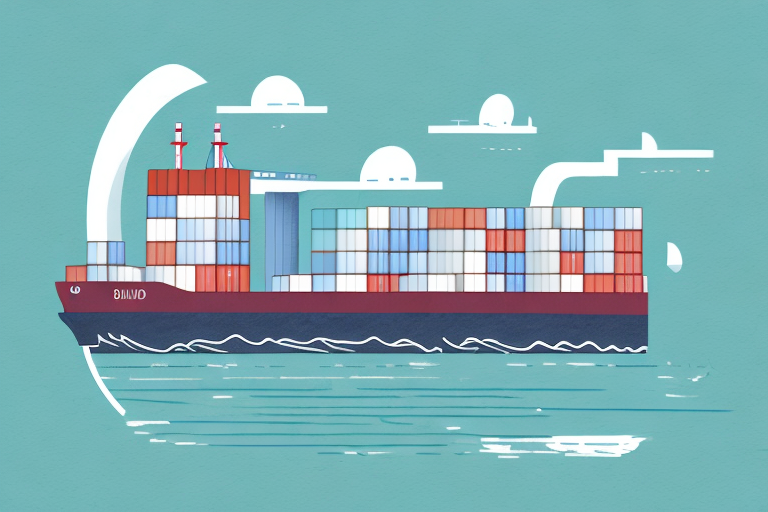Calculating the True Cost of Your Imports: Understanding Landed Cost
Importing goods from overseas can be a lucrative business, but it's crucial to understand all the costs involved before making a purchase. One often overlooked factor is the landed cost, which is the total expense of an imported item once it has reached its destination port. This article provides an in-depth analysis of landed cost, detailed explanations on how to calculate it, and practical tips for managing and reducing your expenses.
What is Landed Cost and Why is it Important?
Landed cost is an all-inclusive metric that considers the price of the product, transportation costs, customs duties, taxes, and other fees associated with importing goods. Understanding landed cost allows businesses to:
- Price Products Competitively: Ensure your pricing strategy accounts for all expenses, maintaining profitability while staying competitive.
- Forecast Profit Margins: Accurately predict earnings by knowing the true cost of imported goods.
- Make Informed Buying Decisions: Select products based on comprehensive cost analysis rather than just the initial purchase price.
Failure to account for landed costs can result in unexpected expenses and lower profitability, which can be especially detrimental for small businesses.
Moreover, analyzing landed cost components can help identify areas for potential savings, leading to significant cost reductions and improved business performance over time.
The Different Components of Landed Cost Explained
Calculating landed cost involves several key components:
1. Product Cost
The base price of the goods being imported.
2. Transportation Costs
Includes shipping, freight, and insurance. These costs vary based on the product's size and weight, the distance traveled, and the mode of transport (e.g., air, sea, rail).
3. Customs Duties and Taxes
These are usually calculated as a percentage of the product's value and can vary significantly between countries and product types.
4. Additional Fees
Includes broker fees, storage charges, port fees, and handling fees. These can add up and should not be overlooked.
5. Indirect Costs
Encompasses overhead expenses, administrative costs, and marketing expenses. Although often overlooked, these costs can substantially impact the final landed cost.
For example, high overhead expenses like rent and utilities will factor into the landed cost, as will significant investments in marketing.
How to Calculate Landed Cost for Your Imports
Calculating landed cost can be approached in two ways: manually or using specialized software.
Manual Calculation
- List all expenses associated with the import, including product cost, transportation, duties, taxes, and additional fees.
- Convert all costs to your local currency using the current exchange rate.
- Sum all the expenses to determine the total landed cost.
Using Software
There are various software solutions available that automate the landed cost calculation process, factoring in variables such as exchange rates, freight charges, and insurance. These tools enhance efficiency and accuracy, making them increasingly popular among businesses.
Accurate calculation of landed cost is essential for determining the true cost of importing products, which in turn informs pricing strategies and profitability forecasts.
Common Mistakes to Avoid When Calculating Landed Cost
Miscalculations in landed cost can lead to significant financial discrepancies. Common mistakes include:
- Omitting Relevant Expenses: Failing to include all costs like broker fees, storage charges, or indirect costs can lead to inaccurate total cost.
- Incorrect Currency Conversion: Using outdated or incorrect exchange rates can distort the landed cost computation.
- Ignoring Trade Agreements and Tariffs: Changes in trade agreements or unexpected tariffs can affect landed costs. Staying informed is crucial.
- Lack of Contingency Planning: Not having plans for unforeseen costs or delays can result in unexpected financial strain.
Maintaining accurate records and regularly reviewing all input variables can help avoid these pitfalls.
Why Understanding Landed Cost Can Help You Make Better Business Decisions
An accurate grasp of landed cost empowers businesses to:
- Select Profitable Products: Choose products that offer the best profit margins after accounting for all costs.
- Negotiate Better with Suppliers: Use comprehensive cost analysis to negotiate more favorable terms and prices.
- Optimize Pricing Strategies: Set prices that reflect true costs while remaining competitive in the market.
Furthermore, understanding landed cost helps identify areas for cost reduction, enhancing profit margins. For instance, negotiating better shipping rates or streamlining the import process can lead to significant savings.
Continuous analysis and optimization of landed costs ensure sustained profitability and competitiveness in the market.
Tips for Negotiating Better Import Prices with Suppliers
Negotiating effectively with suppliers can significantly reduce landed costs. Consider the following strategies:
- Research Competitors' Prices: Understanding market rates provides leverage in negotiations.
- Order Larger Quantities: Bulk orders often come with discounts, reducing per-unit costs.
- Build Long-Term Relationships: Strong supplier relationships can lead to better terms and priority treatment.
- Hire a Customs Broker: A professional can navigate complex customs regulations, potentially reducing fees and avoiding delays.
- Optimize Order Timing: Placing orders during off-peak seasons or when suppliers have excess inventory can result in lower prices.
- Be Flexible with Delivery Dates and Payment Terms: Flexibility can provide additional negotiating power.
Maintaining clear and respectful communication with suppliers fosters mutually beneficial partnerships.
How Landed Cost Impacts Your Profit Margins
Landed cost directly influences profit margins. To calculate profit margins accurately:
- Subtract the total landed cost from the selling price of the product.
- Account for all additional expenses incurred during importing, such as customs fees, transportation costs, and insurance.
A higher landed cost reduces the profit margin, whereas a lower landed cost enhances it. Additionally, the mode of transportation and country of origin can cause variations in landed cost. For example, importing via sea freight is generally cheaper than air freight, though it may take longer.
Understanding these dynamics helps businesses make informed decisions regarding pricing and product selection, ensuring profitability.
Factors That Affect Landed Cost and How to Manage Them
Several factors can influence landed cost, including:
- Exchange Rates: Fluctuations can affect the overall cost of imports.
- Shipping Delays: Delays can increase storage and handling fees.
- Customs Inspections: Additional inspections can incur extra costs and delays.
To manage these factors effectively:
- Implement Contingency Plans: Purchase insurance to cover potential losses and seek alternative transport modes if delays occur.
- Stay Informed: Keep up-to-date with changing regulations, taxes, and fees to anticipate and mitigate unexpected costs.
For more insights on managing shipping delays, refer to resources from reputable sources such as the International Trade Administration.
Using Technology to Simplify Landed Cost Calculations
Technology can streamline the landed cost calculation process, enhancing accuracy and efficiency. Available software solutions range from free tools to comprehensive paid platforms that offer features such as:
- Automated Calculations: Automatically factor in variables like exchange rates, freight charges, and insurance.
- Customization and Flexibility: Tailor the software to fit the specific needs and complexity of your business.
- Integration with Other Systems: Seamlessly integrate with inventory, accounting, and shipping systems.
Choosing the right software involves assessing your business size, the complexity of your imports, and the specific features that align with your operational needs.
According to a Forbes article on import technology, businesses leveraging advanced software solutions can reduce errors and save significant time in their import processes.
How to Reduce Your Landed Cost and Boost Your Bottom Line
Reducing landed cost can substantially improve your profitability. Here are effective strategies to lower landed costs:
- Negotiate Better Prices with Suppliers: Use bulk purchasing and long-term relationships to secure discounts.
- Optimize Shipping Methods: Choose cost-effective shipping options, optimize package sizes, or switch to different modes of transport to reduce freight fees.
- Manage Customs Duties and Taxes: Stay informed about tariff classifications, use duty optimization strategies, and take advantage of any applicable trade agreements.
- Improve Operational Efficiency: Streamline your import processes to minimize delays and associated costs.
Careful planning and research are essential to identify and implement cost-reduction opportunities effectively.
The Importance of Accurate Record-Keeping in Calculating Landed Cost
Accurate record-keeping is vital for precise landed cost calculations. Essential practices include:
- Maintain Detailed Invoices and Receipts: Keep records of all transactions related to imports.
- Track Shipping Information: Monitor shipping dates, customs clearance, and delivery times to manage timelines and costs effectively.
- Regularly Update Records: Ensure all financial data is current to facilitate accurate calculations.
Proper documentation not only aids in accurate costing but also ensures compliance with regulatory requirements and facilitates audits.
Comparing Different Shipping Options and Their Impact on Landed Cost
Choosing the right shipping option can significantly influence your landed cost. Common shipping methods include:
1. Sea Freight
- Advantages: Cost-effective for large and bulky shipments.
- Disadvantages: Longer transit times compared to air freight.
2. Air Freight
- Advantages: Faster delivery times, suitable for time-sensitive goods.
- Disadvantages: More expensive, limited capacity for large shipments.
3. Rail Transport
- Advantages: Balance between cost and speed, suitable for certain regions.
- Disadvantages: Limited availability and higher costs than sea freight.
When selecting a shipping method, consider factors such as cost, speed, reliability, and security. Additionally, account for potential extra costs like insurance and customs clearance fees.
The Role of Incoterms in Determining Landed Cost
Incoterms (International Commercial Terms) are standardized international rules that define the responsibilities of buyers and sellers in global trade. They determine who is responsible for various costs and risks at each stage of the shipping process, thereby affecting the landed cost. Common Incoterms include:
- FOB (Free On Board): Seller covers costs up to loading the goods on the vessel.
- DDP (Delivered Duty Paid): Seller assumes responsibility for delivering the goods to the buyer’s location, including all duties and taxes.
- CIF (Cost, Insurance, and Freight): Seller pays for the cost, insurance, and freight to the destination port.
Understanding and selecting the appropriate Incoterm is crucial for accurately calculating landed cost and mitigating potential risks.
Case Studies: Real-Life Examples of Calculating and Managing Landed Cost
Analyzing real-life case studies can provide valuable insights into managing landed cost effectively. Here are a few examples:
Case Study 1: Negotiating with Suppliers
A small retailer negotiated bulk purchase discounts with suppliers, reducing the product cost component of their landed cost by 10%, thereby increasing their profit margins without raising selling prices.
Case Study 2: Optimizing Shipping Methods
An e-commerce business switched from air freight to sea freight for non-urgent shipments, decreasing transportation costs by 25% and lowering their overall landed cost.
Case Study 3: Managing Customs Delays
A manufacturer implemented a proactive approach to customs compliance, reducing inspection delays and associated storage fees by 15%, which stabilized their landed cost and improved delivery times.
These case studies demonstrate practical strategies for calculating and managing landed costs, ultimately enhancing profitability and operational efficiency.
By thoroughly understanding and effectively managing your landed cost, you can maximize profitability and make informed import decisions. While it requires diligent effort and strategic planning, the benefits of accurate landed cost calculations are substantial and contribute to long-term business success.




















